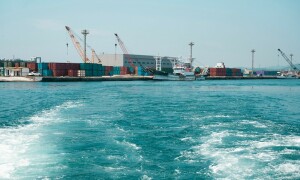In a first, astronauts make cement in space for future Mars habitats

It’s no new news that space agencies are now looking into making Mars a habitable place for humans, and in order to move forward with the idea, for the first time NASA researchers have created cement in space for future durable infrastructure purposes.
In a first, scientists up in space have made cement as a part of a project for looking into the effects of microgravity, intended to determine if solidifying cement in microgravity would lead to unique microstructures.
Concrete is made by mixing sand, gravel, rocks and paste made from water and cement powder. It can prove to be a good material in space due to its strength and ability for better protecting from extreme temperatures and radiation than other materials. Also, it can be made with materials available in space like moon’s dust, which means that there won’t be need to bring construction materials to the moon or Mars, hence reducing costs too, as per CNET.
World’s first futuristic space hotel to be designed like a wheel
“On missions to the Moon and Mars, humans and equipment will need to be protected from extreme temperatures and radiation, and the only way to do that is by building infrastructures on these extraterrestrial environments,” said principal investigator Aleksandra Radlinska. “One idea is building with a concrete-like material in space. Concrete is very sturdy and provides better protection than many materials."
The team discovered samples processed on the space station displayed vital changes in the cement microstructure as compared to samples from Earth. One of the differences was that there were more open spaces, something that can affect the material’s strength.
The microgravity environment of the space station helps to replicate gravity levels present on the moon and Mars and hints at how cement could be formed there. At present, the team is evaluating cement samples carrying the replicated lunar particles processed at different gravity levels.
Researchers believe that discovering that concrete can harden and develop in space gets us a step closer to building structures on moon with the help of native materials in the future. “We confirmed the hypothesis that this can be done,” Radlinska expressed. “Now we can take next steps to find binders that are specific for space and for variable levels of gravity, from zero g to Mars g and in between.”





















Comments
Comments are closed.